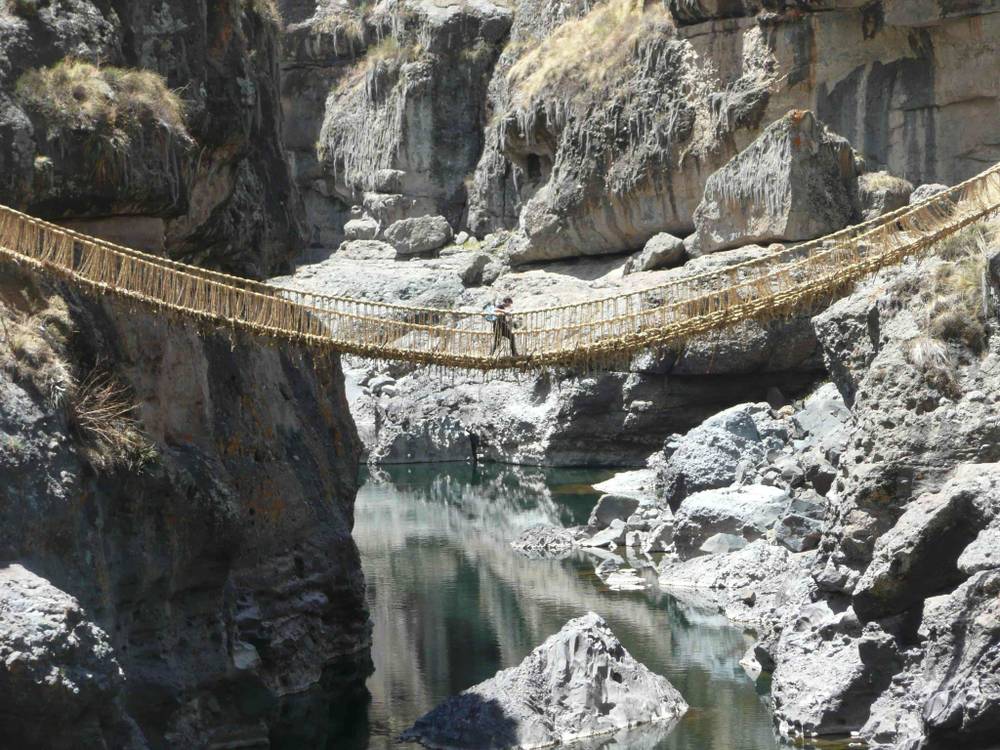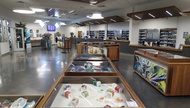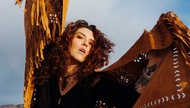A Most Unusual Travel Guide
Technically, it’s a travel guide, but you won’t find hot cocktail bars or art deco hostels in Atlas Obscura. The online reference covers everywhere from Turkmenistan to Southern Nevada, highlighting unusual destinations and odd attractions that often get left out of more traditional travel texts. We caught up with co-founder Dylan Thuras to talk living bridges and why you should wander down that unmarked alley.
How did Atlas Obscura come about? I was getting ready to move to Budapest for a year. [Co-founder Josh Foer and I] both had a history of traveling to these kind of strange and unusual locations—and we were talking about this in regard to Europe and what resources there were. It seemed like all the great resources were out of print books. They were hard to find; they were not necessarily as comprehensive as we felt like they should be; the tone was sort of goofy. And we had this moment where we said, “Why can’t I go online and find an incredible resource for all the incredible small museums with really interesting collections or the crazy outsider art project where somebody’s building a castle in their backyard and working on it stone by stone for 40 years?” … It really just started as fulfilling a need that we wanted for our own travel.
You’re described online as a general “curiosity seeker.” What’s your background? I grew up in the Midwest—I’m from Minnesota—and since I was 10 or so my parents would take me on these road trips. We would go to places like the House on the Rock, which is this totally wild place in Wisconsin where there’s this giant set of collections in this wild building—one of these places that’s really hard to describe without actually going to see everything that’s there. … And then as a teenager, I spent a lot of time in Minneapolis and I was into graffiti, so that got me into exploring abandoned spaces and going into places I wasn’t supposed to be in. I had this feeling—and I’ve always had this feeling—that we see such a limited view of the world that’s around us at any given moment.
What’s the criteria for a place to be listed on Atlas Obscura? It’s a little bit of you know it when you see it. It’s tough to say what belongs and what doesn’t. Something with a great story—at the end of the day that’s what matters most. …The best things in the atlas are things you’re surprised you didn’t already know about. … Sometimes it comes down to some piece of information that’s sort of buried in a place, but then that becomes the focus. So you say, “What’s really interesting about this place is not just the bunker underneath it, but the fact that this bunker is now used to hold priceless film works because the temperature is regulated.” It’s finding the thing that makes you feel a sense of wonder and amazement.
Are you concerned that listing somewhere on the site will end its obscurity? I was actually really concerned about this at the start of launching Atlas Obscura. What we ended up finding was that the overwhelming force in the world at this point is toward global homogenization. A lot of these places, these small museums, these weird art projects, their real threat is not from overexposure, it’s no one knowing about them, no one showing up. And they slowly fade away and disappear and get replaced by a big box retail store. Maybe at a certain point in our evolution we’ll have to reevaluate this if there are lines and lines of people trying to get into some small museum and it’s a big problem for everybody. My hope is that we actually do send some people to some of these places in the hope of keeping them around and keeping the world weird.
What places on Atlas Obscura have made your eyes widen and created that sense of wonder in you? Once in a while we’ll get something that just knocks me on my butt. The root bridges [in Cherranpunji, India]. … People build these little structures and over the course of 15 years over a river, two trees’ roots are sort of intertwined until they form a solid living bridge. Neither of the trees die; they just slowly interweave with one another and then these bridges become regular forms of transportation. They’re strong; they hold multiple people. There’s one that’s sort of a double-decker. And I just could not believe I had never heard of these before.
[Another] is in Turkmenistan. … It’s a place called the Gates of Hell. It is a gigantic, 320-some-feet-across burning hole in the ground in the middle of the Turkmenistan desert. … In the 1970s, a Russian drilling rig was drilling for natural gas and hit a pocket, kind of a cavern, and basically fell into it. It created this giant hole in the desert, and the solution to this problem then—it was leaking natural gas, which is lethal and not a very safe situation—so they set it on fire. And it’s been burning ever since. It’s been burning for 40 years now.
I’ll give you one last one. This one is interesting, and then when you find out more it’s really even weirder. (I could do this all day. It’s a dangerous game.) There’s a place called Skeleton Lake also in India. Basically in the ’40s, someone comes along, finds all these skeletons surrounding this lake in India, thinks maybe it’s troops or something. Turns out the skeletons are much, much older than that—from 800-1,000 years ago. They don’t know what killed them, why they’re all there; they don’t understand what happened. All the skeletons show similar kinds of trauma, which is blunt impact to the head and shoulders. So this is sort of a standing mystery for many years. And then in 2005, a scientific team went out. Based on the forensic evidence and some cultural anthropology, the current scientific explanation is that this is a group of travelers and some sherpas helping them across the mountain, and that they were all killed in a freak flash hailstorm of enough intensity that it basically took out the entire traveling party. … So those are the kind of places I delight in.
Given the sheer amount of information in our online worlds, do you feel like just venturing out and experiencing somewhere that’s not so vetted is especially important right now? Totally. I actually think there’s a danger in the fact that there is so much information available. It makes it kind of seem like all of the information is available and that what you’re getting is the full picture. But there is something still to be said for wandering blindly, for serendipitous discovery, for just letting yourself get lost in a place; and when you see a strange alleyway or doorway, going toward it, not walking away from it. It’s easy within the funnels of TripAdvisor or Yelp—which are great and I think give you a lot of options and in a way, make people more adventurous travelers than they might have been otherwise—[to] get routed into a pretty narrow path. Part of our hope is to convey that idea to people—that the real world will always be bigger and weirder and full of more possibility for discovery than any website or the entire Internet taken as a total can really fully represent.
I like that philosophy of walking toward the small doors and alleyways, but sometimes that can get you into trouble. Have you ever confronted any problems in the name of discovery? Nothing too out of sorts. I think everyone is so much more concerned and self-censoring than the world actually requires of people. … People assume that they cannot go places that they actually can, and they assume they should not do things that are actually fine. … The dangers or trouble you run into are actually much less and the world is much more open and explorable than most people give it credit for being.
What’s the best way to get started? I think just forcing yourself to do stuff you wouldn’t normally do is a good start. … When you’re in New York, you can get on the subway and get off somewhere random and start exploring and walking around for a few hours. … Letting yourself just get lost is really a valuable experience, especially when we’re so tethered into information all the time. … There’s no guarantee you’re going to find any one thing that’s totally incredible, but I do think it starts to open your eyes to experiencing the world in kind of an immediate fashion.





